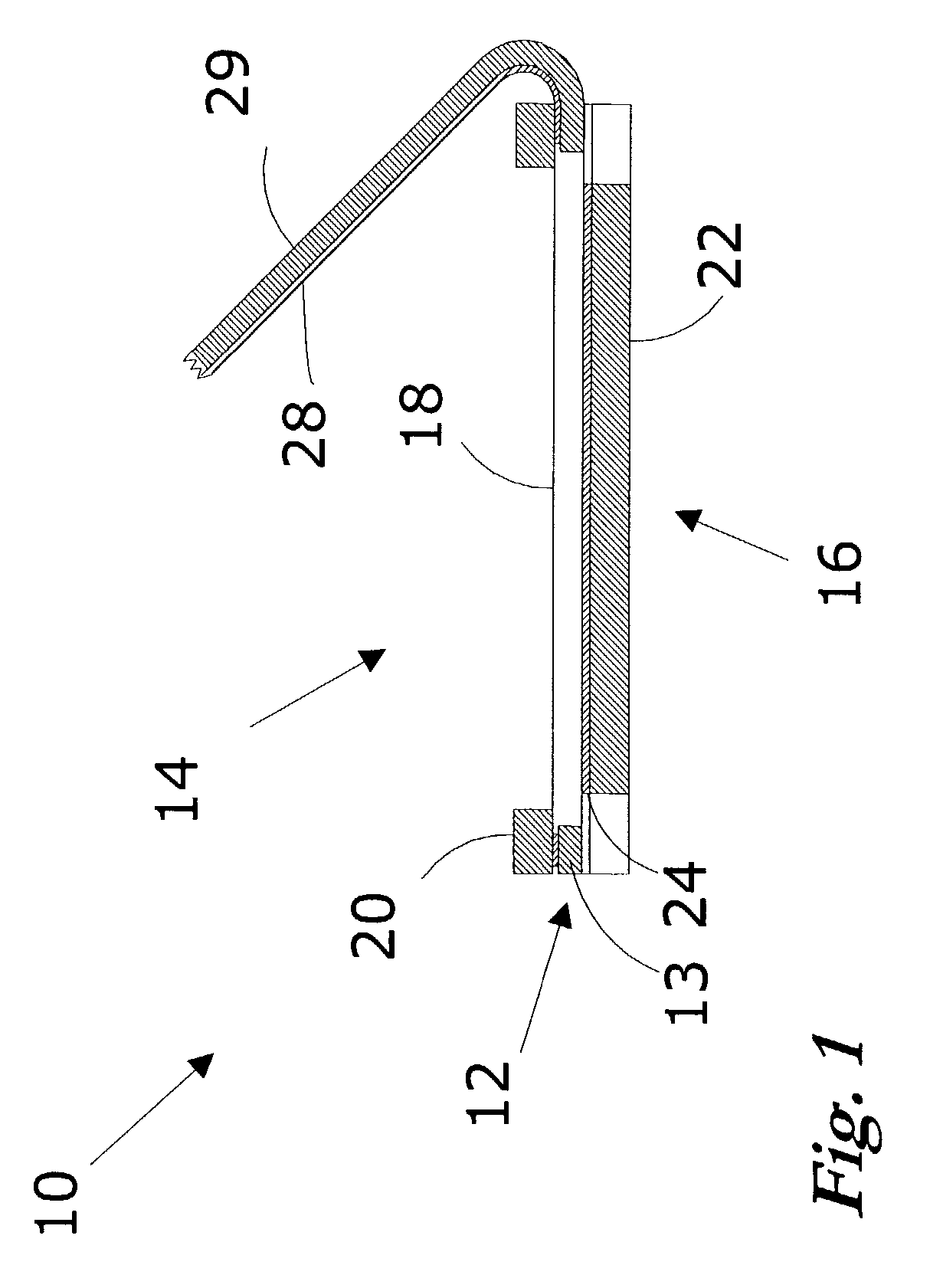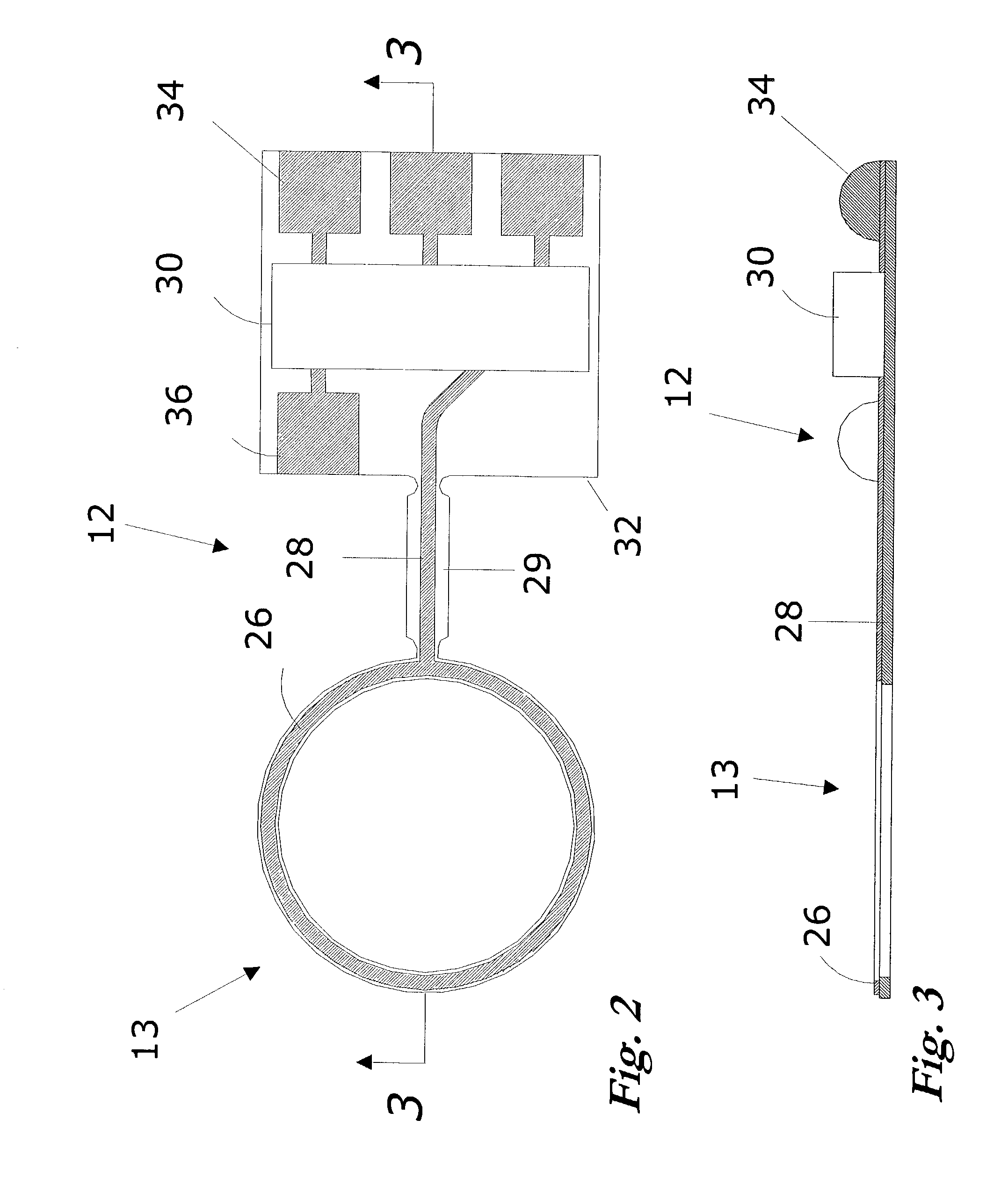Microphone having a flexible printed circuit board for mounting components
- Summary
- Abstract
- Description
- Claims
- Application Information
AI Technical Summary
Benefits of technology
Problems solved by technology
Method used
Image
Examples
Embodiment Construction
[0035]FIG. 1 illustrates a microphone cartridge 10 having a spacer subassembly 12 made of a flexible printed circuit board material, i.e., flex-print. The spacer subassembly 12, which has an annular shape spacing section 13, separates a diaphragm subassembly 14 from a backplate subassembly 16. The flex-print (e.g., polyimide) can have a thickness in the range of 25 to 50 microns, which is about the size of separation that is needed between the diaphragm subassembly 14 and the backplate subassembly 16. The diaphragm subassembly 14 includes a thin, moveable metallized (polymer) diaphragm 18 that is mounted on a frame 20. The backplate assembly 16 includes a rigid base layer 22 and a charged dielectric layer 24, which may be a TEFLON® fluoropolymer coating having a surface charge or a layer of special electret film (“EMFi”), such as one disclosed in U.S. Pat. Nos. 4,654,546 and 5,757,090 to Kirjavinen, both of which are incorporated herein by reference in their entireties. In essence, ...
PUM
 Login to View More
Login to View More Abstract
Description
Claims
Application Information
 Login to View More
Login to View More - R&D
- Intellectual Property
- Life Sciences
- Materials
- Tech Scout
- Unparalleled Data Quality
- Higher Quality Content
- 60% Fewer Hallucinations
Browse by: Latest US Patents, China's latest patents, Technical Efficacy Thesaurus, Application Domain, Technology Topic, Popular Technical Reports.
© 2025 PatSnap. All rights reserved.Legal|Privacy policy|Modern Slavery Act Transparency Statement|Sitemap|About US| Contact US: help@patsnap.com



